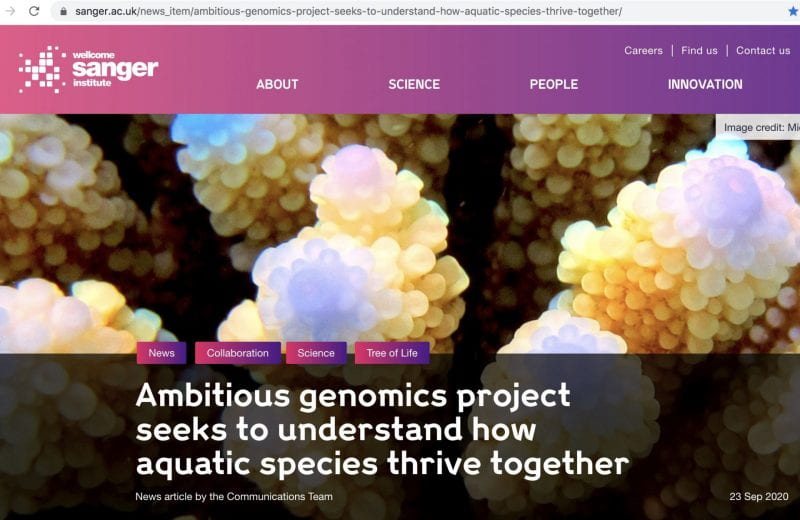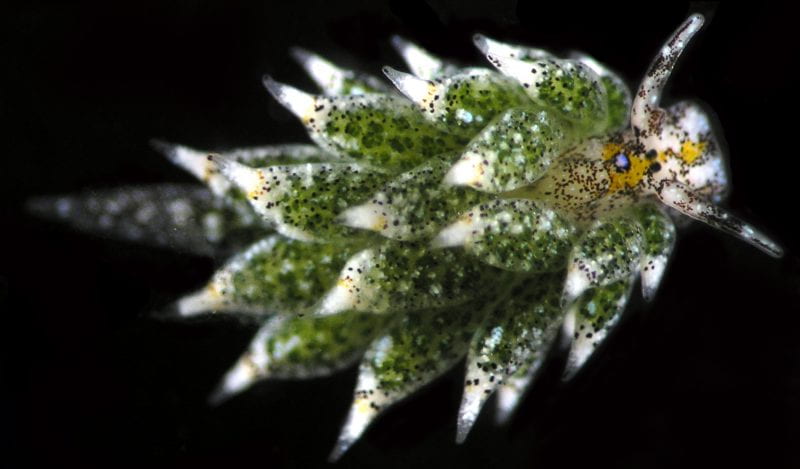Halmos Faculty Brings Marine Genomics to the Public

 This fall, the Gordon and Betty Moore Foundation have initiated a large-scale international Aquatic Symbiosis Genomics project, which includes funding four research “hubs” to organize 50 symbiotic species each for whole genome sequencing at the Wellcome Sanger Institute in Hixton England.
This fall, the Gordon and Betty Moore Foundation have initiated a large-scale international Aquatic Symbiosis Genomics project, which includes funding four research “hubs” to organize 50 symbiotic species each for whole genome sequencing at the Wellcome Sanger Institute in Hixton England.
One hub will be led by HCAS faculty member Jose V. Lopez, Ph.D. in collaboration with local and international researcher, this hub will focus on studying and sequencing “photosymbiotic” organisms. These partnerships include aquatic animal hosts such as corals, sea slugs or giant clams which depend on microbial symbiotic partners that photosynthesize (the capture of sunlight energy to produce sugars). Dr. Lopez states “indeed most plants and animals harbor microbial symbionts, including humans and bovids, so symbiosis is the rule in nature not the exception. Photosynthesis and symbiosis may represent two of the most fundamental processes that define life on this planet.”
Many aquatic photosymbionts may totally depend on the microbe for existence. For example, reef building corals cannot build their own calcium carbonate skeletons without their dinoflagellate algal symbionts. Corals will eventually perish after bleaching (loss of their photosynthetic algae) for prolonged periods of time. Saccoglossan sea slugs eat photosynthetic algae, but do not fully digest them. The “leftover” chloroplasts become temporarily incorporated into the animal tissue making them essentially solar powered.
Dr. Lopez is the current president of the non-profit Global Invertebrate Genomics Alliance (or GIGA) and teaches a graduate level genomics course.
